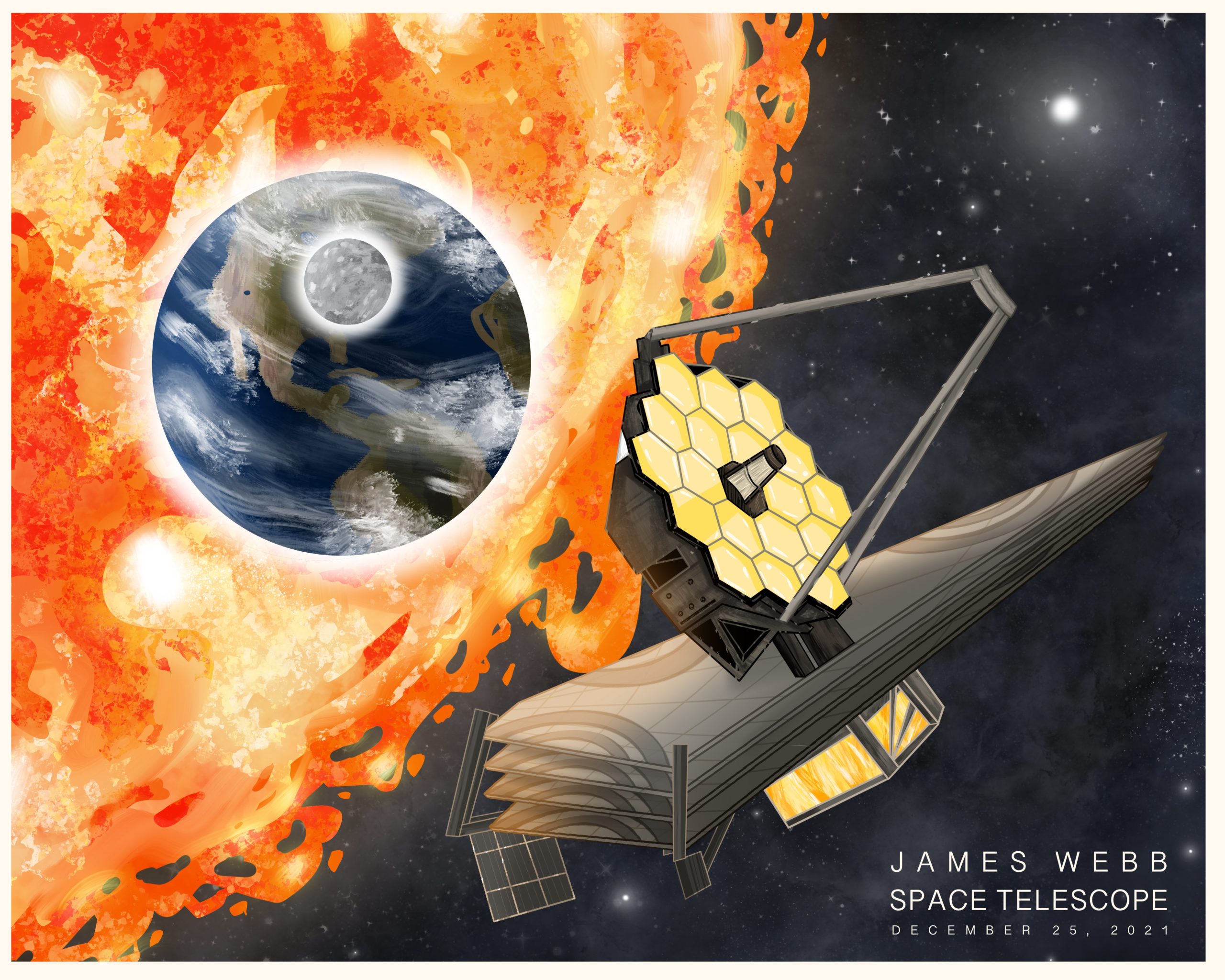2022 Honorable Mention – Sierra Iverson

James Webb Space Telescope
The James Webb Space Telescope launched December 25, 2021. In my digital painting, the telescope is shown in its final position, the Second Lagrange point. The telescope met this point on January 24, 2022. From its position in the solar system, the Moon, Earth, and Sun would be directly behind the telescope. My painting serves as a commemoration of this important moment in history, not only for the scientific community, but also for the secrets of the universe it will reveal for all of humanity.
My piece is a 20” x 16” digital painting made with an illustration application (Procreate) for the iPad and Apple Pencil. I used a combination of painterly brushes (such as oil paint presets) and splatter brushes to create textures. Cleaner line and flat shading were utilized for up close details. Airbrush effects were also used to mimic light, reflections and atmosphere. I included a small written title in the bottom right corner in order for the viewer to quickly understand what is pictured.
My painting depicts the James Webb Space Telescope that launched on December 25, 2021. The telescope is named after James E. Webb, an administrator for NASA from 1961-1968, who played an important role in the development of the Apollo program. Here, the telescope is shown in its final position, the Second Lagrange point, also known simply as L2. The telescope met this final position on January 24, 2022. From this position, the Moon, Earth, and Sun would be directly behind the telescope. My painting serves as a commemoration of this important moment in history, not only for the scientific community, but also for the secrets of the universe it will reveal for all of humanity. The reasoning behind its importance in comparison to the Hubble Space Telescope is for a few reasons. Firstly, its much larger size and its positioning farther away from Earth allows it to see much further into space than Hubble. Secondly, it is able to pick up different light waves that Hubble cannot, therefore revealing different information about space.
